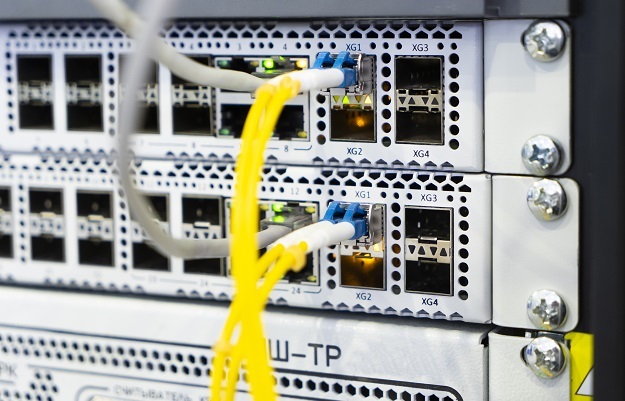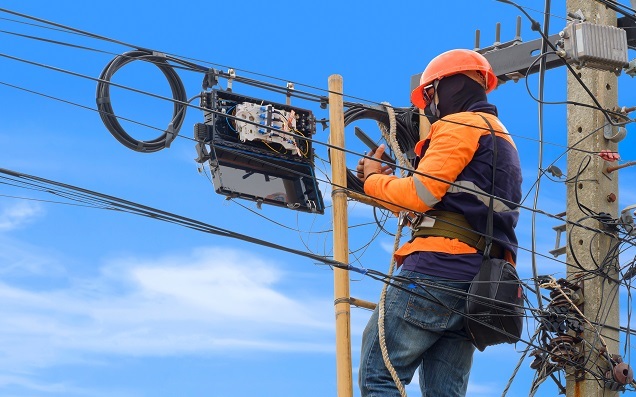
 Data Structure
Data Structure Networking
Networking RDBMS
RDBMS Operating System
Operating System Java
Java MS Excel
MS Excel iOS
iOS HTML
HTML CSS
CSS Android
Android Python
Python C Programming
C Programming C++
C++ C#
C# MongoDB
MongoDB MySQL
MySQL Javascript
Javascript PHP
PHPPhysics
Chemistry
Biology
Mathematics
English
Economics
Psychology
Social Studies
Fashion Studies
Legal Studies
- Selected Reading
- UPSC IAS Exams Notes
- Developer's Best Practices
- Questions and Answers
- Effective Resume Writing
- HR Interview Questions
- Computer Glossary
- Who is Who
What is the full form of FOSC?
Introduction
Fiber Optic Splice Closure (FOSC) is an instrument used for protecting fiber optic cable splices. It provides a safe and secure environment for splicing fiber optic cables in order to guarantee the robustness and reliability of the fiber optic connections.

FOSCs are frequently utilized in external and underground installations where fiber optic cables are susceptible to damage from rough environmental conditions.
Components of FOSC
The device that manages and protects fiber optic splices is known as a Fiber Optic Splice Closure (FOSC). It usually consists of several components. The FOSC's primary components are −
Enclosure − The FOSC's external enclosure, which protects its internal components from external elements which includes dust, water, moisture, and temperatures.
Cable glands − Utilized to securely attach and enclose both outgoing and incoming fiber optic cables to the enclosure are cable glands.
Splice tray − The inside panel or tray wherein fiber optic splices are produced, controlled, and secured.
Splice protection sleeves − Clear plastic covers known as "Splice Protection Sleeves" are utilized in order to protect spliced fiber optic cables from damages caused by moisture or additional external factors.
Mounting bracket − Used for securing the FOSC to a pole, wall, or other mounting surfaces.
Sealing tape − Used to seal and secure the FOSC enclosure after installation in order to protect its internal components from external elements.
Optional special features − Depending on the need, FOSCs can also include grounding packages, cable organisers, and strain relief systems.
Types of FOSC
Fiber Optic Splice Closures (FOSCs) include a number of types, each designed to satisfy particular requirements for different applications. Main types of FOSCs include −
Dome FOSC − Dome FOSCs are suitable for outdoor installations, including aerial, subterranean, and direct burial applications. They are dome-shaped FOSCs that can accommodate an abundance of fibers.
Inline FOSC − FOSCs with a cylindrical form known as inline FOSCs are intended for use in straight-through applications. They are frequently utilized in long-distance fiber optic networks and have a significant capacity for fibers.
Horizontal FOSC − Fewer fibers can be found in horizontal applications such as wall hanging, where flat-shaped FOSCs, also known as horizontal FOSCs, are used.
Vertical FOSC − A vertical FOSC, which is a tall cylindrical-shaped FOSC designed for use in vertical applications such as pole installation, can hold a huge number of fibers.
Modular FOSC − The design of these FOSCs allows for simple increase or decrease of the number of fiber and cable entry.
Heat shrink FOSC − These FOSCs are frequently used in difficult locations and use heat shrink covers to protect the fiber optic splices from adverse environmental conditions.
Pre-terminated FOSCs − These FOSCs have the connectors installed and are pre-terminated, making it simple to connect and install fiber optic cables without the need for splicing.
Applications of FOSC
Fiber optic cables are utilised in a variety of applications where fiber optic splice closures (FOSCs) are used. Some of the numerous uses of FOSCs are −
Telecommunications − Fiber optic cable splices are protected and managed by FOSCs in telecommunications networks. Local area networks (LANs), wide area networks (WANs), and long-distance fiber optic networks all make use of them.
Cable TV − In cable TV networks, fiber optic cables are connected to subscriber premises through FOSCs. They are utilized in distribution centres, hubs, and headends.

Data Centers − FOSCs are utilized in data centers to offer fiber optic cable splices a safe and secure environment. They link servers, switches, and other networking hardware together.
Security and surveillance − Fiber optic cables are connected to cameras and other monitoring devices using FOSCs in security and surveillance systems. They are utilized in surveillance applications such as perimeter security systems, traffic monitoring systems, and others.
Oil and Gas − In the oil and gas industry, FOSCs are utilized to offer a safe environment for the splicing of fiber optic cables. They are utilized in oil and gas infrastructure like pipelines, refineries, and others.
Military and defense uses − FOSCs are used to create a safe environment for fiber optic cable splices in military and defense applications. They are utilized in military applications like communication and surveillance systems.
Conclusion
In conclusion an important component is the Fiber Optic Splice Closure (FOSC), which protects fiber optic cable splices and provides the durability and dependability of fiber optic connections. Telecommunications, cable TV, data centers, security and surveillance, oil and gas, and defense and security sectors are among the industries where FOSCs are used. They are used in further applications as well. There are several FOSC types available, each designed to satisfy the certain requirements of distinct applications. The basic components of FOSCs are the enclosure, cable glands, splice tray, splice protection sleeves, mounting bracket, sealing tape, and optional accessories.
FAQs
Q1. What importance does the FOSC have?
Ans: FOSC provides a secure environment for fiber optic cable splices in order to guarantee the dependability and durability of fiber optic connections in a variety of functions.
Q2. What does FOSC want to achieve?
Ans: The goal of FOSC is to protect fiber optic cable splices and ensure the fiber optic connections' long-term reliability and endurance.
Q3. Where are FOSCs most commonly used?
Ans: Applications involving telecommunications, cable TV, data centers, security and surveillance, oil and gas, and military and defense regularly utilize FOSCs.

